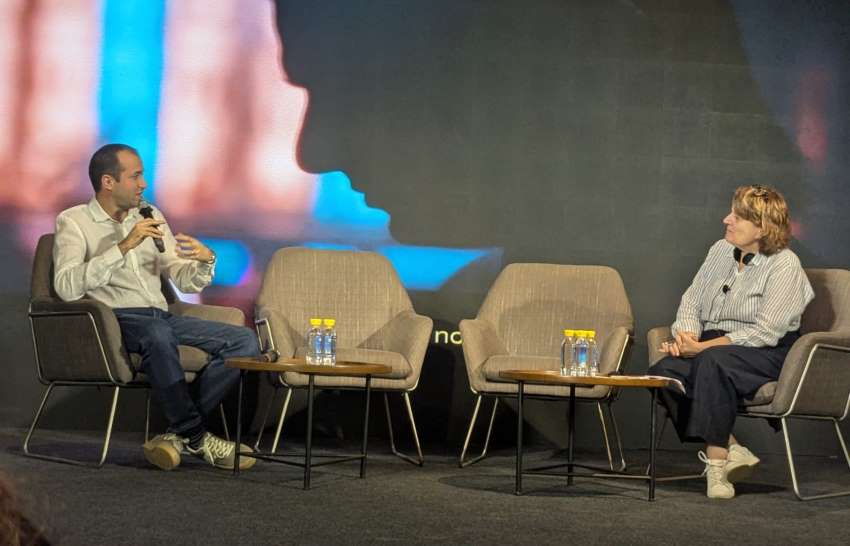FW
Walter Reiners Foundation, the VDMA Textile Machinery Association is actively involved in promoting young engineers. As a part of this initiative, six successful young engineers were recently awarded by Peter D Dornier,Chairman of the Walter Reiners-Stiftung (Foundation) for their outstanding work.
The award ceremony was a part of the Aache-Dresden-Denkendorf International Textile Conference, held in Dresden, Germany.
The award-winning work well depicted the strength of German textile machinery construction. These young engineers were honoured with creative awards for the cleverest bachelor or project work.
The winners Janina Elser, TU Chemnitz, Abdelrahman Elbayoumi, ITA Aachen and Hendrik Pötzsch, ITM Dresden, each were awarded with a prize money of €3,000 each.
Elser’s bachelor thesis dealt with the prototypical development of circular knitted knee bandages, whereas Elbayoumi’s work was a feedback control system for an over-braiding process. Pötzsch’s project focused on the production of carbon fibres using solvent wet spinning technology.
Tim Kaluza, ITM Dresden and Julia Eckert, ITA Aachen, were awarded 2 promotion prizes in the category diploma/master thesis with prize money of €3,500 each. Kaluza’s diploma thesis deals with the automated production of mesh-free multiaxial fabrics, while Eckert developed an environmental assessment system for the production of jeans for her master thesis.
Besides, Dr Stefan Heinrich, TU Chemnitz, was awarded with the promotional €prize of the German Textile Machinery Industry in dissertation category. Stefan received prize money worth €5,000 for his work on gear requirement in textile machinery, which will make a great contribution in engineering practice.
India’s cotton yarn production is expected to increase only marginally in fiscal ’20.
After remaining largely range-bound in fiscal ’18, cotton yarn production in India saw a three per cent growth in fiscal ’19. Overall export demand for cotton yarn remained strong during fiscal ’19 on account of high demand from China, coupled with competitive prices in the international market. However, domestic yarn demand continues to be sluggish with substitution taking place from manmade fibers. During the first half of fiscal ’20, cotton yarn prices witnessed a marginal uptick of about 2.7 per cent on the back of increased raw material prices in the market. However, yarn demand for domestic players remained subdued in the export market during the same period owing to higher domestic cotton prices compared to international prices of the fiber. Also, demand from China remained weak on the back of free trade agreements with Pakistan, which competes directly with India’s cotton yarn.
During fiscal ’19, as much as 40 per cent of the total cotton yarn was exported to China, followed by 18 per cent to Bangladesh, five per cent to Pakistan and to Egypt and three per cent or four per cent to Vietnam.
An hour-long insightful discussion which had taken place with Dr. Kater Hake, Vice President for agricultural and environmental research at Cary-based Cotton Incorporated, revealed some of the successful management practices adopted by the Australian cotton sector. Hake has just returned from his trip to down under interacting with global cotton industry people and visiting farm country in Dalby region in Queensland, Australia.
Australian production this year for the season-ending in March 2020 is estimated to range from 0.7 million to 1.3 million bales. Discussions with Dr. Hake revealed four important takeaways are technology adaptation, value-addition to cotton byproducts, water use efficiency and resistance management of Bt traits.
With increasing labor costs, Australian cotton farmers are effectively utilising robotics. Hake pointed out that he had seen herbicide sprayer robots that have weather signaling systems in them. The sprayer senses wind directions and temperature and switches on and off enabling good environmental stewardship. As the Australian crop is irrigated, due to government restrictions in water usage, planting is limited to water availability during the growing season.
Australia has no oil crusher for oil hence, all cottonseed goes to feeding cattle. Interestingly, 25% of the cattle diet is cottonseed, which enriches the quality of meat, catering to high-quality export. Resistance management of Bt traits has helped the industry to have control bollworms. While the resistance issue is not a serious concern in West Texas, other parts of the United States face this situation. Some of the agricultural practices such as shallow tillage to disrupt the pupae is helping the Australian farmers stated Hake.
As the amount of available land in Australia for cotton is limited, with more acreage for cotton here, the United States is still the largest and reliable supplier of cotton in the export market.
In closing Hake stated, “The production systems between the United States and Australia are similar and the two countries can learn and help each other to move the industry forward.”
 Ravi Kapoor, Textile Secretary expounds on the current scenario of Indian textile exports and reforms needed to boost them.
Ravi Kapoor, Textile Secretary expounds on the current scenario of Indian textile exports and reforms needed to boost them.
If India aims to be five trillion dollar economy, it needs to drive its exports first. “However, our exports are not very competitive on a global level, said Ravi Kapoor, Textile Secretary at Texcon 2019. “Our fears stem from the fact that we cannot sustain the onslaught of the most competitive country of a particular product in the domain,” he added.
Petroleum, gems and jewelry, engineering and textile constitute the chunk of India’s exports. “Out of this, we import petroleum, do a 6-7 per cent value addition on it and export the same to other countries,” added Kapoor. Similarly in case of gems and jewellery, we buy the gems, stones and diamonds from outside, do the cutting and polishing, add 5-7 per cent valuation to it and export the same. “It is only in the textile industry that we start from the fiber, do the entire processing, make the apparel and then export it to other countries, “he stated. 
Being an integrated industry in India, textile has the potential to be explored. Around 70 per cent of countries across the world now use manmade fibers. However, India is still stuck with cotton. Studies show that in the next 15 years, the world usage of cotton is likely to decline to just 20 per cent. “Therefore, we need to explore the manmade fiber sector. Besides, we need to rationalise our tax structure and neutralise the inverted duty structures. The issues of refunds, blocking of working capitals, unnecessary wasting of time, money etc. also need to be sorted out,” noted Capoor.
Out of the total 45 -46 billion dollar global exports, there are just 10 companies who export goods worth more than 1,000 crores in India. In Vietnam, there is a park called Randon across 4,500 acre whose export turnover is 3 billion dollars. If we compare this to export turnover of the entire country, it is significant. So it is important that we focus on growing our exports.
"Turkey is not just the biggest textile producing country on the European continent but also the third largest textile exporter of Europe, the seventh largest apparel exporter in the world, the fourth largest apparel supplier of Europe, and the fourth interior textiles exporter in the world"
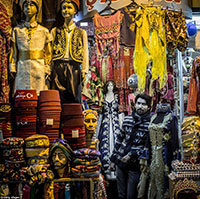 Over the past several years, Turkey’s exports of performance-based textiles have increased significantly due to the thriving sportswear industry in the European and US markets. The country has established itself as a powerhouse textile exporter with over 4,200 textile and clothing companies operating in it. The recent advances in polymer and fiber science have allowed the country to meet modern-day performance demands, boosting overall market sales by 37 per cent since 2011.
Over the past several years, Turkey’s exports of performance-based textiles have increased significantly due to the thriving sportswear industry in the European and US markets. The country has established itself as a powerhouse textile exporter with over 4,200 textile and clothing companies operating in it. The recent advances in polymer and fiber science have allowed the country to meet modern-day performance demands, boosting overall market sales by 37 per cent since 2011.
Design-oriented approach, innovation exceed expectations
Today, Turkey is not just the biggest textile producing country on the European continent but also the third largest textile exporter of Europe, the seventh largest apparel exporter in the world, the fourth largest apparel supplier of Europe, and the fourth interior textiles exporter in the world. The country holds 3 per cent share in world textile exports and 4.5 per cent share in home and interior textiles; its share in technical textiles is 1.5 per cent.
Turkey’s design-oriented approach and innovation allows its industry to meet demands besides exceeding customer expectations. The country has been successful in meeting demands of the US market where consumers emphasise on the performance features of their clothes in all types of weather conditions. Turkish clothing such as T-shirts, jerseys, pullovers and special sportswear are in great demand in the country, boosting Turkey’s position as a leading textile exporter.
High quality, easy access, FTAs facilitate Turkey’s lead 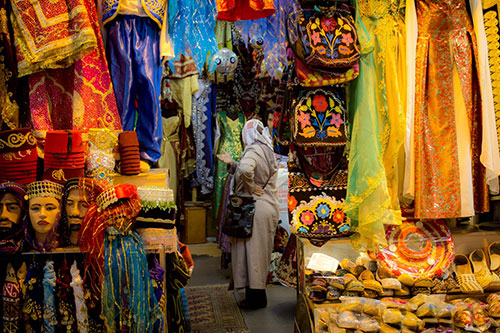
The performance-wear created by the Turkish manufacturers is of high quality and comfortable. It has the potential to protect against wind, rain, snow, extreme cold and heat, and high stress situations. Consumers wearing Turkish-manufactured sportswear can get high-quality, comfortable clothing that doesn’t restrict movement and still looks great.
Turkey offers several advantages in textile production as well as the supply of raw materials due to the easy access it provides to strategically important regions and major energy resources, making it a gateway country to European markets. The country is a rich source of raw materials used for the production. Its liberal trade policies equipped with the highly skilled labor force enables it to have a well-developed industry that can produce quality products.
Another advantage that Turkey offers is that it has entered customs union agreement with EU and free trade agreements with other countries. The country is also noted for its favorable working conditions and continues to invest in utilising advanced technologies to grow their industry.
A bright outlook for the Turkish Textile Industry
Due to these benefits Turkey is set to become the world’s leading performance-based textiles exporter. The country is promoting its goods in key markets of EU countries and the Unites States. It is also employing several other strategies like increasing brand exposure overseas, promoting their textiles to top brands, increasing shares in existing markets, creating strategies to strengthen the textile industry worldwide and encouraging industry best practices. As the country continues to showcase its high-performance sportswear and associated materials worldwide, more and more top brands are likely to enjoy the benefits of that the Turkish textile industry offers.
"Youngone is a global exporter of apparel. Founded in 1974, Youngone Corporation is a leading global manufacturer of outdoor/athletic clothing, textiles, footwear and gear built with a history of innovation, partnership and trust. They have operations in 13 countries, including the United States, Switzerland, Bangladesh and Vietnam"
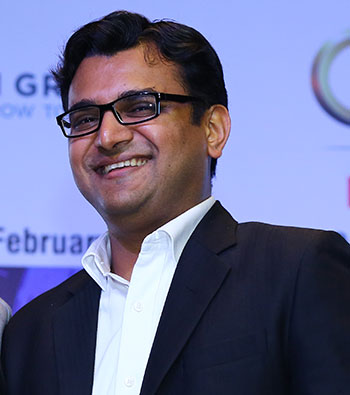 Youngone is a global exporter of apparel. Founded in 1974, Youngone Corporation is a leading global manufacturer of outdoor/athletic clothing, textiles, footwear and gear built with a history of innovation, partnership and trust. They have operations in 13 countries, including the United States, Switzerland, Bangladesh and Vietnam.
Youngone is a global exporter of apparel. Founded in 1974, Youngone Corporation is a leading global manufacturer of outdoor/athletic clothing, textiles, footwear and gear built with a history of innovation, partnership and trust. They have operations in 13 countries, including the United States, Switzerland, Bangladesh and Vietnam.
An agreement was signed with the state government for infusing funds into the textile park. Indian ambassador to Korea, Sripriya Ranganathan, Korean ambassador to India, Shin Bongkil and Telangana information technology and industries minister, K.T. Rama Rao were present at the signing ceremony.
On the occasion of signing the dotted lines Mihir Parekh - Director – Kakatiya Mega Textile Park, TSIIC speaking to DFU Publications stated “that they had been eyeing India for a long time. They invested in Coimbatore in 2004. But that project did not take off. They started scouting for more locations. In 2017 they came in contact with us. Youngone was impressed with the progressive policies of Telangana. They decided on the state. But Korean and Japanese investors take their time. They assess every minute aspect before deciding on an investment.“
Further continuing Parekh mentioned “we projected Telangana as an attractive investment destination. For two years we engaged with them. Their chairman visited Telangana. We visited their manufacturing facilities in Vietnam, Bangladesh. We guided them on all aspects, grounding their investment, the approvals, ensuring the skilled labor is available etc. During the two years they interacted with almost all the government levels—the industries minister, the bureaucrats, the administrators down to the people on the ground. Finally we have a signed agreement with them.” 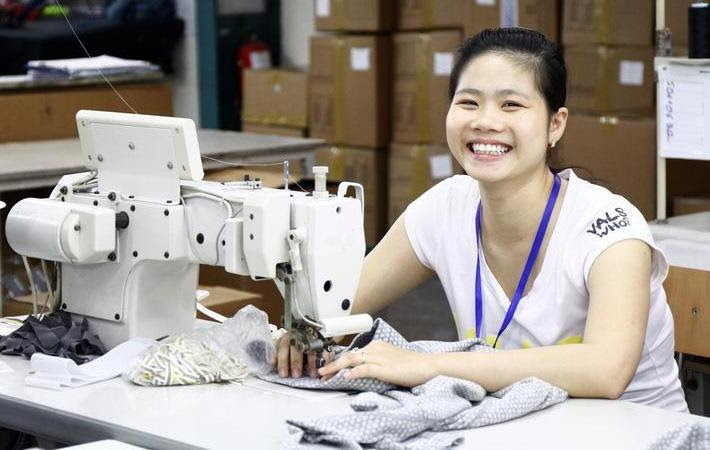
Parekh further emphasized that “they want to target the pre monsoon window from January to July. Within this time they want the first unit up and running. In all we have allotted them 300 acres. They will set up eight manufacturing units. Of these four will be garment manufacturing units. Then they will backward integrate by setting up a knitting, processing and a technical textile unit. In all they will invest Rs 900 crores, which may be hiked. The eight units will directly employ 11-12,000 people. The indirect employment may be to the tune of 20,000. This is easily the largest FDI in recent years in textiles in India. It will put Warangal on the global garmenting and apparel map.”
Further Parekh mentioned “when Youngone starts exporting out of Warangal, it will attract international companies by its success. This is an example of an international investor doing well in Telangana. It will give confidence to other international companies in the textile sector to come and invest in India.” When asked about a message to the textile industry Parekh said “ I would like to tell the Indian textile industry they are missing something if they are not in Telangana. India has advantages in terms of labor, a growing middle class, a ready market. But with all these advantages, you still have to be in the right location to ensure you are leveraging these advantages.”
Tamil Nadu’s textile units are facing a severe shortage of working capital. This has been caused by volatility in cotton prices, the Eurozone crisis and an extended credit period due to a liquidity crisis in the system. Since business demands more money, entrepreneurs have had to extend their credit limit. On the one side, working capital from banks has eroded and on the other the market is demanding more credit. Unable to work in this system, a large percentage of units facing higher manufacturing costs in terms of raw material, energy, and lower price realisation of their products are in a negative cycle now. The working capital shortage is felt at a time exporters of manmade fiber apparel are trying to grow their market share in the west, particularly in the American market.
Tamil Nadu’s textile clusters are populated by small factories running on bank credit. Over the years, the number of days before a bank can declare a loan asset as non-performing has come down. It used to be four quarters to declare NPA, then got reduced to 180 days, and now it is 90 days. In a business scenario where credit lines have spread, these norms are impacting businesses, especially small businesses.
Youngone is setting up a 290 acre facility at Telangana’s at Kakatiya Mega Textile Park. This fiber-to-fabric integrated textile cluster is built on 1,200 acres of land. Over a dozen companies have come forward to set up their manufacturing operations in the park with a combined investment of over Rs 3,900 crores. Youngone is a South Korean textile and apparel major. The facility would involve manufacture of knitted and woven garments for outdoor wear and technical textile products, predominantly for exports. It is estimated that more than 12,000 jobs would be created through this project.
Youngone operates in 13 countries, including Bangladesh, Vietnam and Ethiopia, with subsidiaries in the US and Switzerland, and employs over 90,000 persons worldwide. The Kakatiya mega textile park is the first industrial park project to reach the ground-breaking stage in three years after the formation of the state. The project also assumes significance due to its location in the cotton-rich Warangal region which was once a hotbed of Naxalite activities in Telangana. A state-of-the-art infrastructure featuring common effluent treatment and zero-liquid discharge facilities besides ready-built factory sheds will be developed in this park. There is also a provision to expand the park to 2000 acres in future.
Inditex’s results for the first nine months of the year showed that the Spanish retail giant continues to shrug off the retail malaise, as far as sales are concerned, with a 7.5 per cent increase in the period to the end of October. Sales reached €19.8 bn in the first nine months and it reported an 8 per cent rise in gross profit for a gross margin of 58.2 per cent, as well as its highest-ever net cash position (up 17 per cent) and a 12 per cent leap in net profit to €2.72bn. Inditex is one of the world's largest fashion retailers, with eight brands selling in 202 markets through its online platform or its over 7,000 stores in 96 markets.
The company continuing to roll out new stores, to accelerate its digital expansion and to tie them both neatly together to make sure it’s reaching the customer where the customer wants to be reached.
That was clear from Q3 with the firm having launched Zara online in South Africa, Ukraine, the Philippines and Colombia, while Massimo Dutti’s and Zara Home’s online platforms went live in the UAE, Saudi Arabia, Lebanon and Morocco. Stradivarius, Oysho and Uterqüe also launched their online platforms in the US. And all group brands are now operating worldwide online stores since the launch of bershka.com/ww. These reach more than 200 markets across the globe.
And on the physical stores front, importantly, the company opened its first for&from location outside Spain, in Como, Italy. The chain has an ethical focus and gives jobs to disabled workers.
YKK’s fastening products will be integrated with Browzwear’s 3D solutions. YKK’s products will be available in Browzwear’s platform in true-to-life 3D. Browzwear shares YKK’s vision for a more innovative, sustainable and efficient fashion industry. Both companies share a commitment to drive innovations for more sustainable processes and practices for apparel businesses. The first stage of the YKK integration will be available in the January product update. The YKK catalogue will be incorporated in phases, with new products added in each of Browzwear’s software updates.
YKK is a global leader in fastening solutions, including zippers, plastic hardware, hook and loop fasteners, webbing tapes, and snaps and buttons. Founded in 1999, Browzwear is a pioneer of 3D digital solutions for the fashion industry, driving seamless processes from concept to commerce. For designers, Browzwear accelerates collection development, opening limitless opportunities to create iterations of styles. For technical designers and pattern makers, Browzwear rapidly fits graded garments to any body model with accurate, true-motion material replication. Worldwide, more than 650 organisations such as Columbia Sportswear, PVH and VF leverage Browzwear’s open platform to streamline processes, collaborate and pursue data-driven production strategies so they can sell more while manufacturing less, which increases both ecological and economic sustainability.

